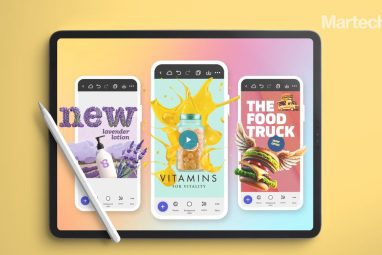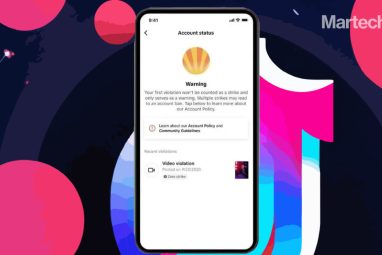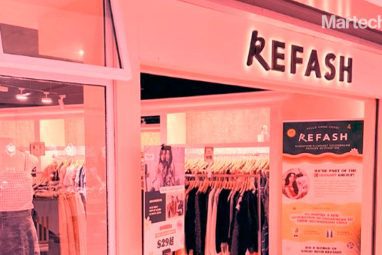Millennials and Gen Z Want Experiences Across Channels: CMO Council Study
It’s official – physical and digital engagement is paramount for effective customer engagement. No matter what age, gender or location, consumers around the world agree that when it comes to brand interactions, personal, trusted and reliable omnichannel engagement is the preferred option and choice. Over 85 per cent of 2,000 global consumers surveyed by the […]
It’s official – physical and digital engagement is paramount for effective customer engagement.
No matter what age, gender or location, consumers around the world agree that when it comes to brand interactions, personal, trusted and reliable omnichannel engagement is the preferred option and choice.
Over 85 per cent of 2,000 global consumers surveyed by the Chief Marketing Officer (CMO) Council, in partnership with Pitney Bowes, reveal that a blend of both digital and physical channel experiences is the preferred way of interfacing with brands, as revealed in a new study, dubbed Critical Channels of Choice. Yet, only 13 per cent of consumers believe that brands are fully meeting this expectation and delivering across both physical and digital channels.
Also Read: Omnichannel Programmatic is The Way Ahead in 2019
Bucking the assumption that younger generations are digital-only, 87 per cent of Millennials (born between 1981-1996) and Gen Z (born after 1997) say they prefer an omnichannel choice of communications. Across all generations, key omnichannel touchpoints are an expectation, not an option. These include access to email, phone, web, in-person engagements, video, social media and printed mail. The overwhelming majority of consumers – 91 per cent – suggesting that omnichannel experiences are either important or critical, with 29 per cent suggesting that companies should be “where I want, when I want, ready to share and communicate how I expect.”
Among the key generational shifts identified by the study:
-
- When it comes to channels, consumers can’t live without, all but Gen Z reached for their phones. For Gen Z, they simply cannot part with social, which they are likely accessing on their phone.
-
- Social emerges as a key channel of discovery and influence for Millennials and Gen Z, while Gen X (born between 1965-1980), Boomers (born between 1946-1964) and the Silent Generation (born between 1928-1945) rely on websites to discover new products, and they admit that the web is also the biggest influence on buying decisions.
-
- Think ONLY Gen Z is an open book? Think again. Across all generations, the majority of consumers are comfortable sharing some data with brands, especially consumers in Europe who have been well-educated about data and its uses and benefits. In exchange, consumers expect to understand what is collected and how it is used. Specifically, Millennials are slightly more inclined to share more data in exchange for better personalisation.
-
- Everyone gets frustrated when asked to re-start conversations with a brand after they shift to a new channel. But Boomers hold a grudge, as 78 per cent – the highest across all ages – say that this frustration has led them to question why they do business with the brand at all.
“It is easy to assume that a single generation will embrace or reject a single channel as we see individual adoption rates soar or plummet year over year,” noted Liz Miller, SVP of Marketing with the CMO Council.
Also Read: Millennials Are Using Voice Search to Find Local Small Businesses, Mostly Restaurants
“But we also live in an age where we are seeing incredible creativity being applied across both digital and physical channels – where digitally native brands like Google, Casper and Harry’s Shave Club are looking to disrupt consumer behavior and consideration patterns with beautiful printed pieces pulled from a mailbox and extend the reach and impact of email, mobile and in-store experiences. We can’t afford to ignore or discount physical experiences by assuming digital is the only channel of engagement. Consumers are not focused on the channel. They are focused on their own needs, requirements and preferences. The call to action is to meet them in their moments and not in ours,” she adds.
One example of how channels are evolving to increase influence and disrupt behaviours can be seen in consumer reaction and reliance on video. Consumers indicate that control, personalisation and the ability to “build-their-own-adventure” were all ways to their hearts and wallets. Nearly half of respondents (48 per cent) said they want to engage with videos that reflected specific products and services they own or are interested in. Another 43 per cent stated they would like the video to be more interactive, allowing them to decide what information they can view and when.
Also Read: Consumers Want Brands to Understand Their Emotions: Invoca Study
“It’s incredible to note how even the newest and most exciting of digital channels continue to evolve as consumer preference fully embraces the omnichannel opportunity,” noted Jeff Winter, VP of Marketing & Communications, Pitney Bowes. “Whether by traditional means of communication, or more modern means like video and chatbot, one constant remain: everyone wants to be treated as an individual, and it is up to us to deliver on that promise. The amount of data and emerging technologies available today make this an attainable goal for our industry. But it’s those brands who embrace these capabilities that will stand out as leaders in the future.”
To see the details of this report, click here.






